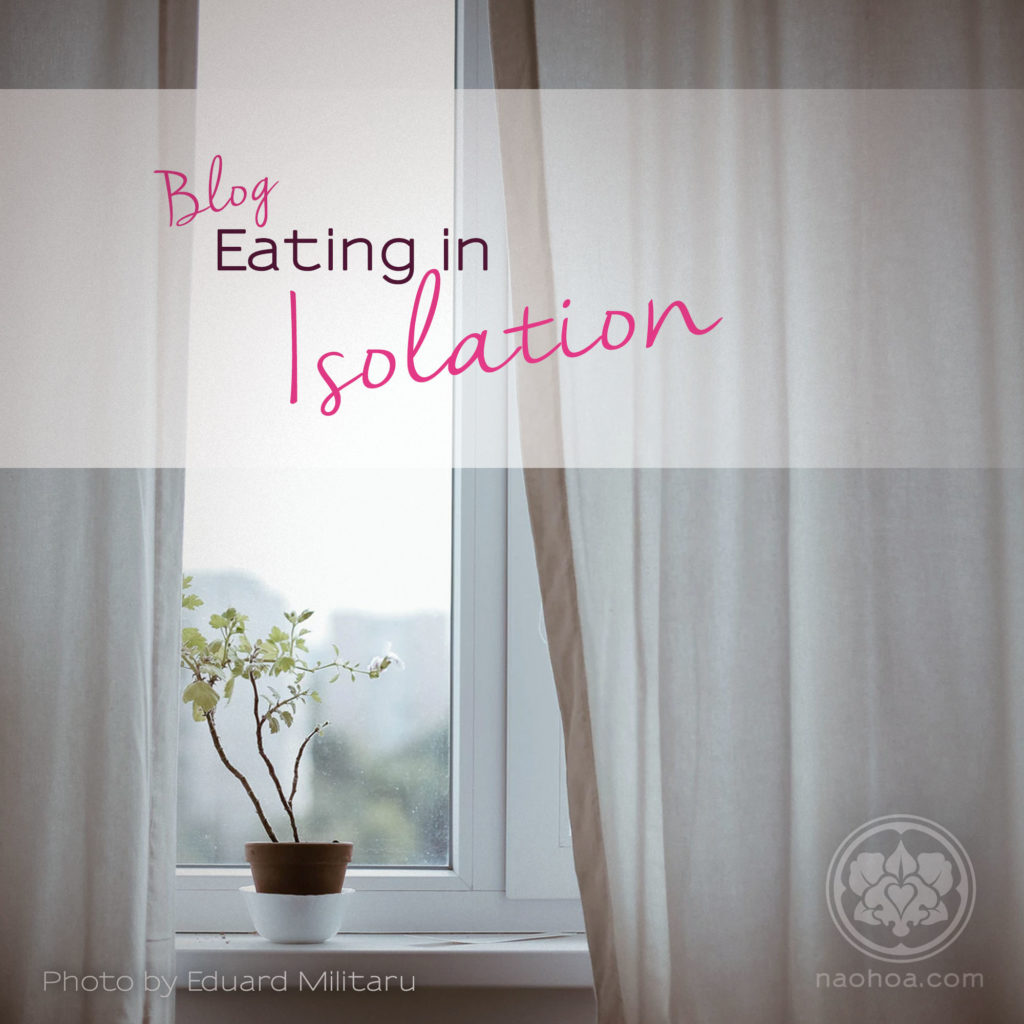
There has been a lot of talk amongst my friendship groups regarding food and how to eat healthily during the COVID-19 outbreak – especially if you’re accustomed to doing a weekly shop for fresh produce. In the UK, we’ve not undergone a full-blown lockdown (yet), so there’s still time to prepare ourselves for the possibility of being self-isolated for at least 14 days.
Although it might be tempting to stock up on ready-meals and pot noodles, limiting your nutritional intake for long periods of time (and moving less or having less exposure to fresh air and sunshine) will not only harm you physically, but mentally as well. Gut health affects your brain and mental health. The more varied your diet, the better condition your gut microbiome (and therefore immune system) will be. I’m not saying avoid them completely (let’s be real 😜) – just that there are sooooo many ways to eat well if you’re willing to do some prep and give it a go.
It’s often cheaper to cook from scratch and not only will you benefit from all the nutrients and fibre that ready-meals lack, you’ll also have a sense of accomplishment from making something from seemingly nothing! Even if it doesn’t go well the first (few) times, seeing progress in your abilities will increase your confidence and give you motivation to keep going.
Admittedly, I’m writing this from the perspective of a massive food nerd and appreciate that not everyone will or want to have all these things, but the purpose of this post is to share ideas and suggestions to give you encouragement. Food doesn’t have to be monotonous.
Here’s some information I hope you’ll find helpful, so you can eat healthily during such uncertain times…and if you can’t cook yet, you’ll have plenty of time to learn, right? 😉
.
Frozen ❄️
e.g. berries / peas / mixed veg / meat / fish / ready meals
So many things can be frozen, but if you’re limited on space like we are, I’d recommend using most of it for base ingredients, so you can cook full meals with them and other goods (listed below). After batch-cooking, freeze some portions off for easy meals in the future. Of course, there’s nothing wrong with the odd cheat treat! We always have kievs tucked away for days we can’t be bothered to cook a full meal (we eat them with rice and boiled veggies).
If space is an issue, I’d recommend using dried carbs (rice, pasta) instead of frozen ones (chips, wedges), so you have more room for meals or ingredients that can be used in many things and not be used up so quickly (e.g. peas).
.
Dried 🍚
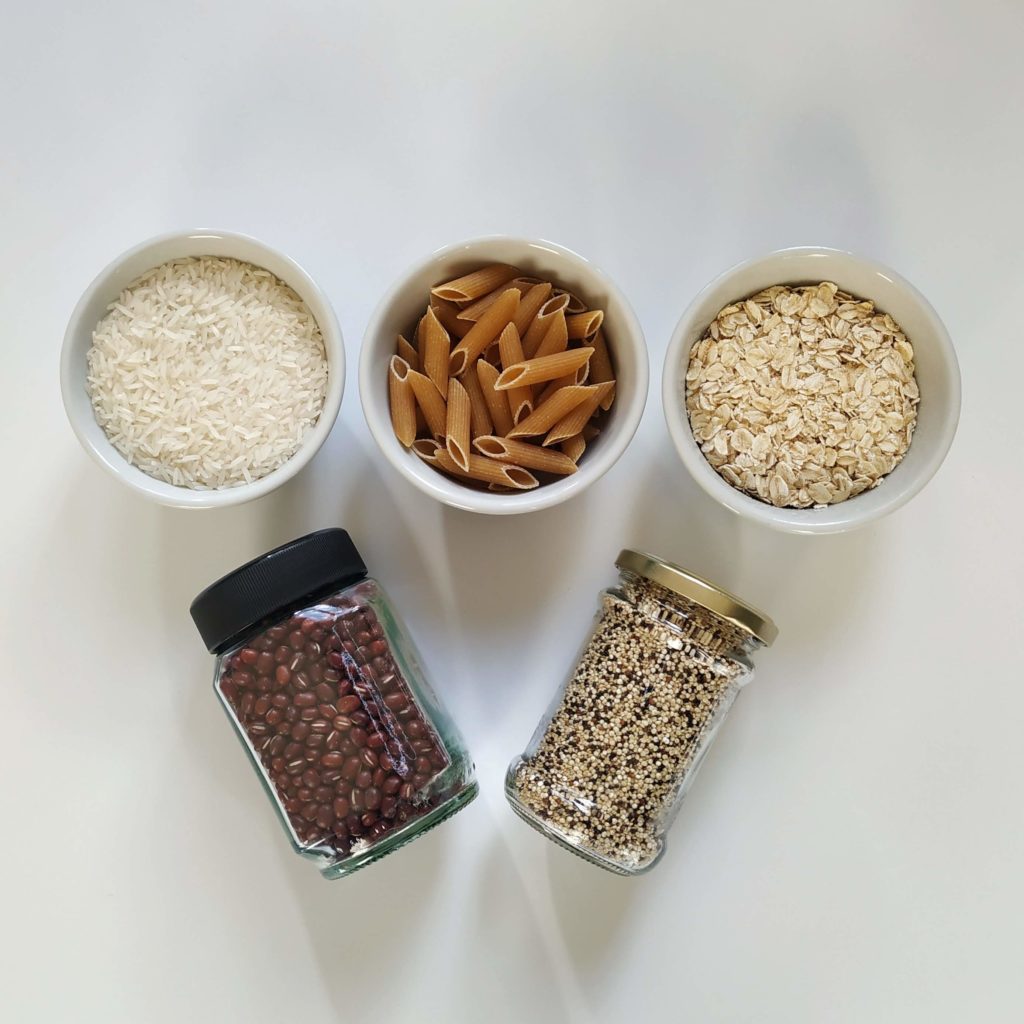
e.g. rice / pasta / oats / quinoa / legumes / herbs and spices / tea
Most carbs come in dried form, which last a long time and can often be bought in bulk. If you have freezer space, storing pre-soaked beans is a great time-saver (and won’t have preservatives like their tinned counterparts). I quite like adding aduki beans to rice (before cooking) for added iron, or a sprinkle of wild rice to add texture and fibre (7:1 white/wild rice ratio with 1.5 cups of water per cup of rice. We don’t soak them in advance).
Dried herbs and spices will add flavour to your meals so you don’t get bored! The upfront cost is expensive (unless you buy from Asian or zero-waste stores), but they last a long time, so you get your money’s worth eventually.
Herbal teas such as lavender or chamomile have a calming effect, whilst green tea boosts metabolism. Ginger is great for the immune and digestive system. If you’re bloated, mint tea can be soothing on the stomach.
.
Tinned 🥫
e.g. chopped tomatoes / coconut milk / beans or chickpeas / fruit / soup
It’s a good idea to stock versatile goods that can be used for a variety of meals. For example, chopped tomatoes can be used for dishes such as bolognaise, chilli or pasta sauce (which could double-up as a pizza topping if you concentrate it). Coconut milk can be used in various types of curries or to deserts or smoothies.
.
Jars 🍯
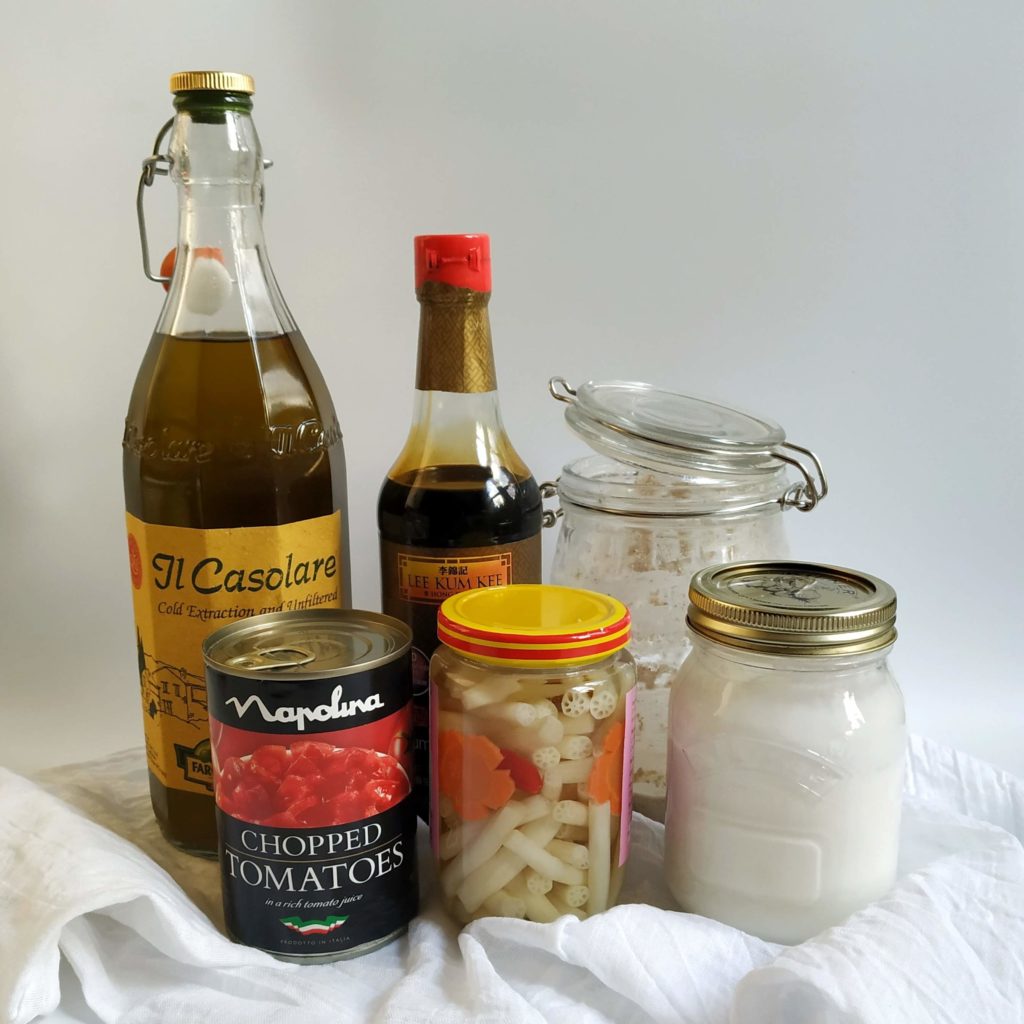
e.g. pasta sauce / spreads / curry paste
It’s good to mix your pantry with a few meal shortcuts for when you’re tired but still want to eat well. I typically add onion, garlic, spices and vegetables to jarred pasta sauce to rev it up!
You’ll get more uses out of curry paste (rather than sauce) and it’ll save you from making any from scratch. You’ll also have more control of the potency whilst cooking.
.
Cartoned 🥛
e.g. UHT milk / fruit juice / tofu
Tofu packed in cartons have a long shelf life and is a good source of protein if you’re veggie/vegan, or have run out of meat. UHT milk and their non-dairy alternatives have a long shelf life when unopened, then need to be kept in the fridge.
.
Pickled 🥒
e.g. vegetables
Great for a crunchy side dish or topping! Easy enough to make your own or buy off the shelf. The acidity from pickled goods or citrus fruits are great for cutting the fat in heavier meals.
.
Fermented 🍞
e.g. kimchi / kefir / sourdough / kombucha
Fermented goods are great for your gut and keep for a long time. You can either buy them as-is or make your own!
Kimchi (chilli cabbage) can be used as a side dish or ingredient to soups or other mains. Kefir is a probiotic yoghurt drink that can be drunk as-is or used as a replacement for yoghurt or sour cream in dishes (you’d lose the health benefits after heating though). Sourdough starters only need feeding once a week (flour and water) if kept in the fridge and enables you to make fresh loaves of bread with just water, salt and flour. Kombucha needs sugar and water and has similar benefits to kefir but not as many (and has a higher sugar content).
.
…What about fresh fruit & veg? 🍎
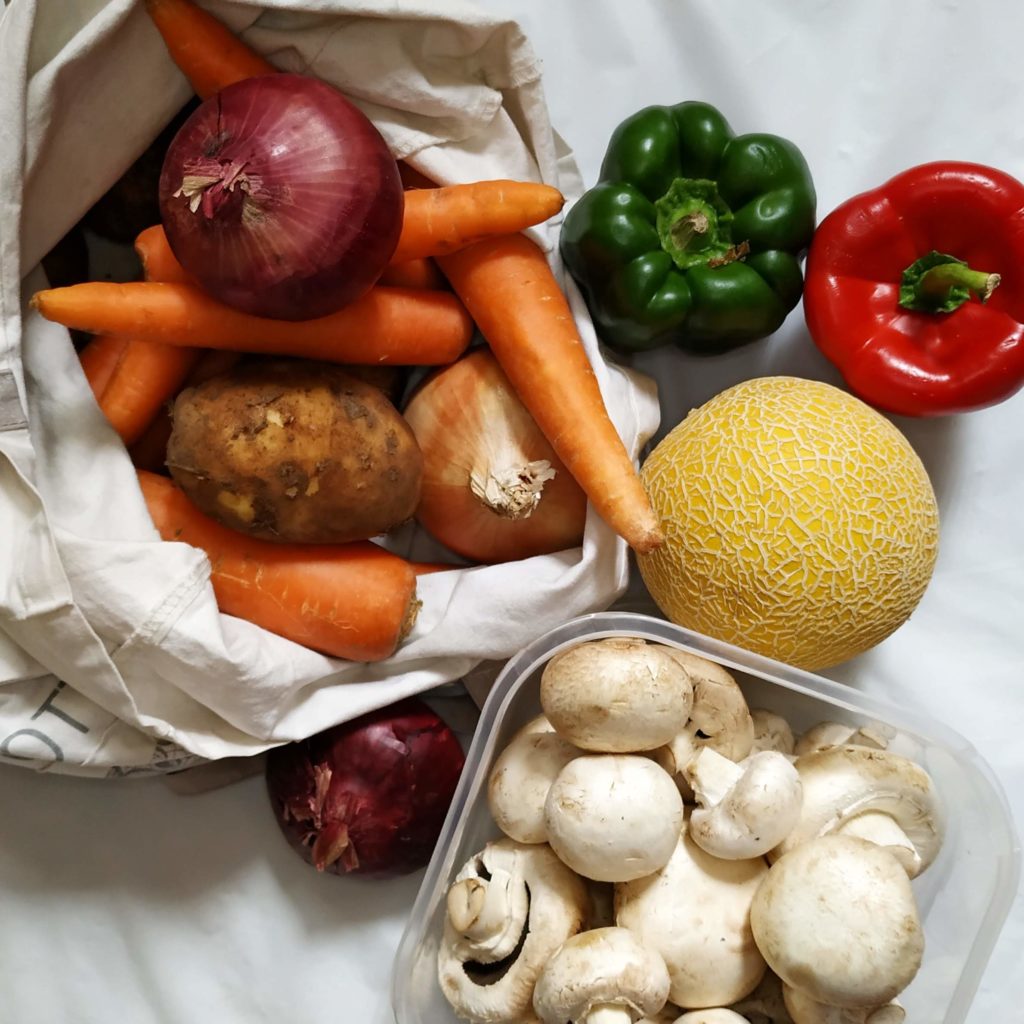
Root vegetables last the longest and other fresh veg can be kept in the fridge for a week or so. Personally, I’ll be batch-cooking meals with fresh veg, then freeze them in portions. For veggies that freeze well, you’re better off buying them already-frozen, as they’ll have been processed soon after harvesting, maintaining more nutrients compared to being stored for days first.
I find that citrus fruits such as oranges last a good few weeks in the fridge (they’re also a great source of vitamin C and fibre!). Softer ones such as apples can still be enjoyed after losing their crunch by grating and cooking into oats for breakfast, or baked in oat bars/flapjacks/cakes. Same goes for bananas, or you can peel, slice and freeze them for smoothies. Ones with really thick skins, like pomelos, can last a month before removing the seal!
.
Powders 🍲
e.g. spices / stock / liquid meals / sachet spices for particular meals
Powdered stock is a great and easy way to add flavour to your meals – especially if you don’t have lots of spices at hand. We typically use vegetable and/or chicken in ours.
Powdered garlic or granulated onions are super handy if you’re out of the fresh stuff!
Powdered meals that you simply add water to are typically advertised to busy workers or gym buffs. If isolation and resources become extreme, this is an option, though I’d personally prefer to eat whole foods. I suppose using these every now and then would help spread the cost and length of time of your larder without making you feel bored from lack of bite and texture.
If you’re not interested or can’t afford to stock up on individual spices, sachets for things like fajitas, chilli or casserole can be an easy alternative. I’ve personally swayed away from these in recent years due to the environmental impact of single-use packaging, and have some recipes for the examples listed that don’t use many spices on my Instagram page…it’s worth listing here anyway, as I totally get that not everyone will want to cook from scratch every time!
.
Oils/Seasonings 🍳
We eat mostly Asian cuisine, which is reflected in this last section – feel free to add suggestions~
If you don’t already have them, these items are very versatile for cooking:
- Olive oil (great for heart health when used cold) – V, Ve, GF, DF
- Rapeseed/Canola oil (a healthy oil for cooking) – V, Ve, GF, DF
- Soy sauce (we use dark, so it lasts longer) – V, Ve, DF
- Salt & Pepper (standard! At least have these on hand) – V, Ve, GF, DF
- Fish sauce (used in Asian cooking a lot. Gives umami and saltiness to dishes, as well as nutrients from fish) – GF, DF
- Tomato purée (can be used for soups, sauces, curries..) – V, Ve, GF, DF
- Margarine (lasts longer than butter and is lower in saturated fat. Also good for those who are lactose intolerant or vegan) – V, Ve, GF, DF
Other ingredients that we use a lot that add flavour are:
- Oyster sauce (adds sweetness and umami) – GF, DF
- Sambal Olek (chilli paste that works well with all kinds of cuisines – not just Asian) – V, Ve, GF, DF
- Rice wine / Mirin (non-alcoholic)…or wine in general, depending on what you’re cooking. – V, Ve, GF, DF
- Sesame oil – V, Ve, GF, DF
.
Closing Thoughts 😌
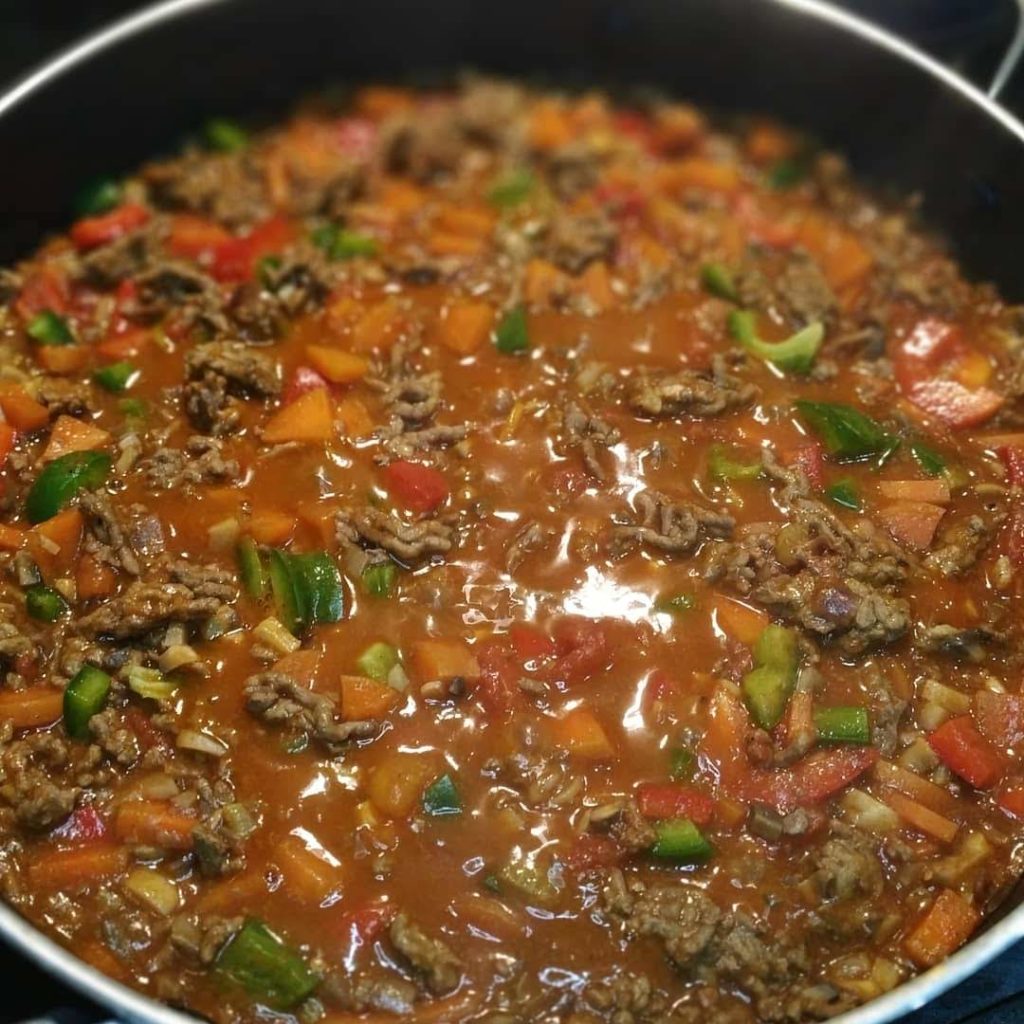
All of these things apply to a healthy lifestyle, with or without a pandemic – I’ve simply highlighted items with a longer shelf life to keep you going without the need to pop out too often. Keeping clean and safe is paramount, but perhaps we should use this opportunity as a learning experience as well. Learn about and try different foods, learn to cook and most importantly, learn to look after ourselves inside and out, as well as those around us.
If you know of any vulnerable people in your area (particularly the elderly living alone) and are able to spare some resources, why not share some of your meals with them? The safest way when under quarantine is to leave parcels on their doorstep and ring the bell. Include a list of ingredients or better yet, check if they have any allergies before offering them food.
COVID-19 has taken the world by surprise and has unfortunately taken casualties along the way. Despite the loudness on the news and social media, it’s important to acknowledge the large percentage of full recoveries and keep things in perspective.
This will only have a mental and physical toll if we let it. Practicing mindfulness techniques such as meditation, yoga and daily gratitude will help keep our mind in peace. Maintaining good personal hygiene such as thorough hand-washing, covering our coughs/sneezes and regularly cleaning surfaces will keep us and others physically safe.
Who knows, after all this, maybe we’ll all end up living like those fabulous lifestyle bloggers we’d normally roll our eyes at. 😜 Keeping clean and eating well can only be a good thing, right?
Thanks for reading and I hope you’re well and safe.
Kind regards,
Naomi xxx
P.S. More posts on food, recipes & eco-living can be found on my personal Instagram page: @naomi.hoang
